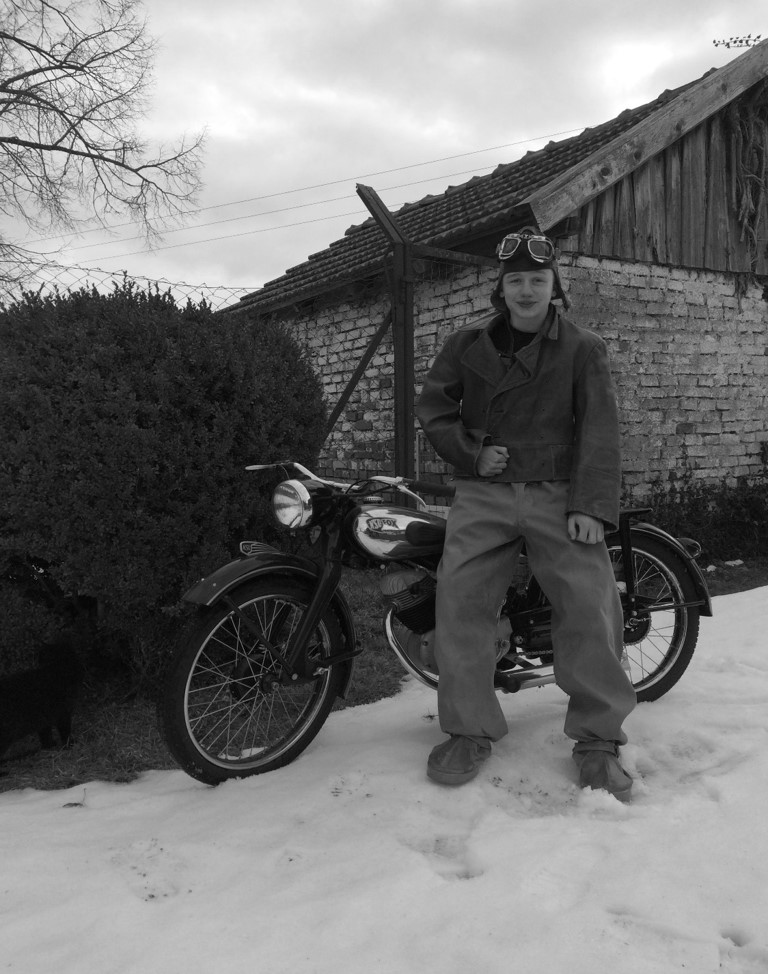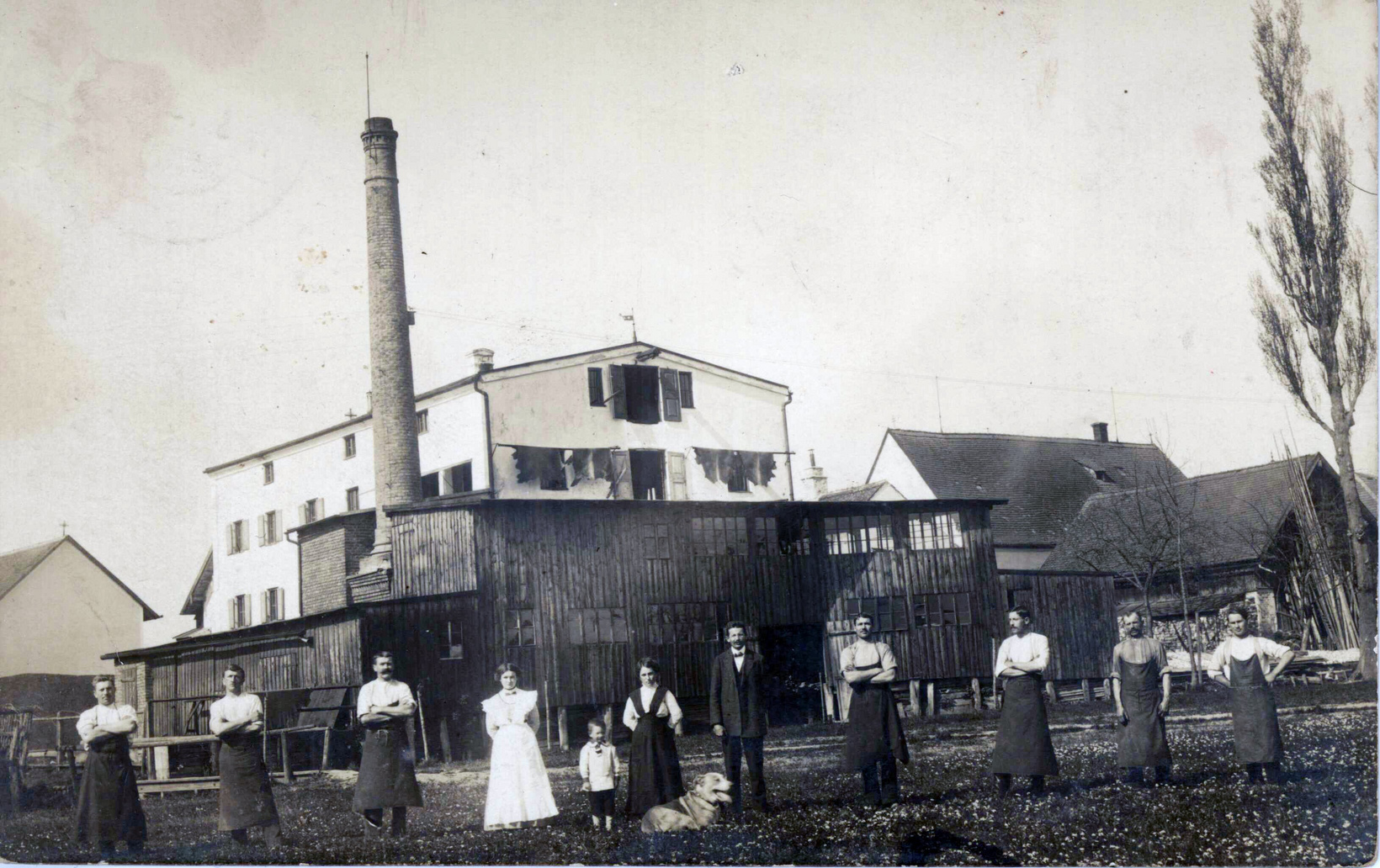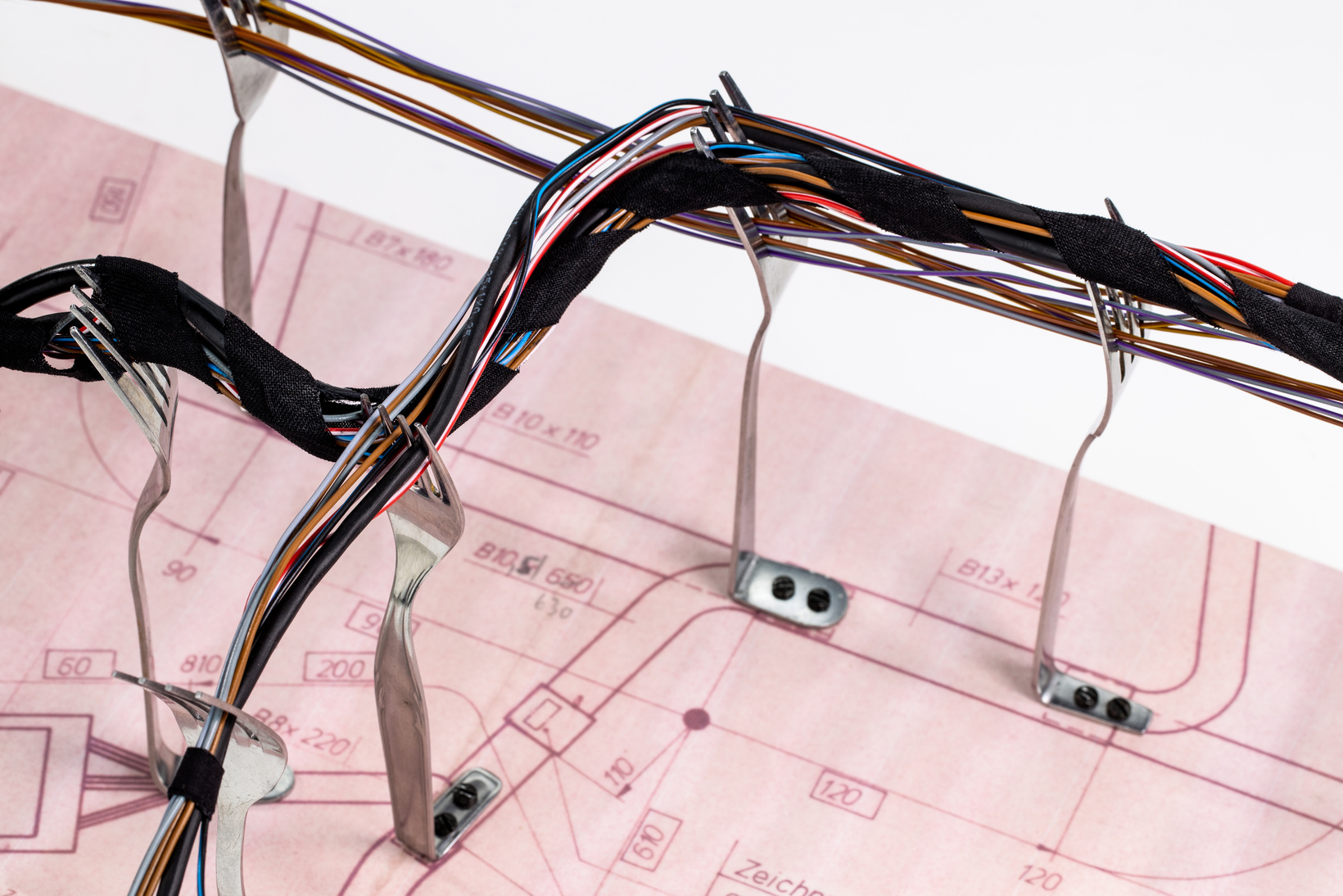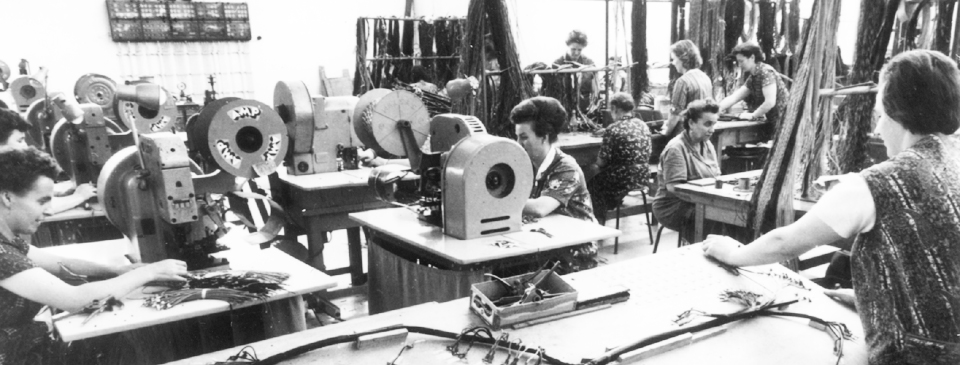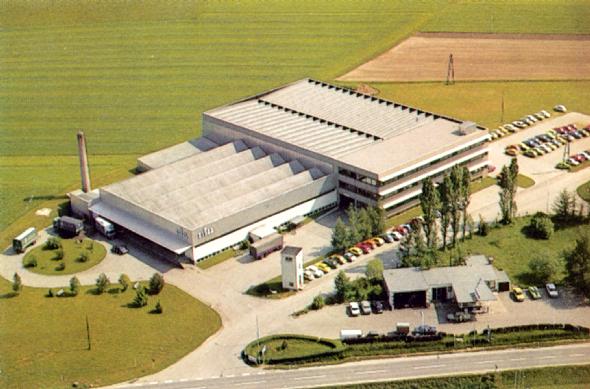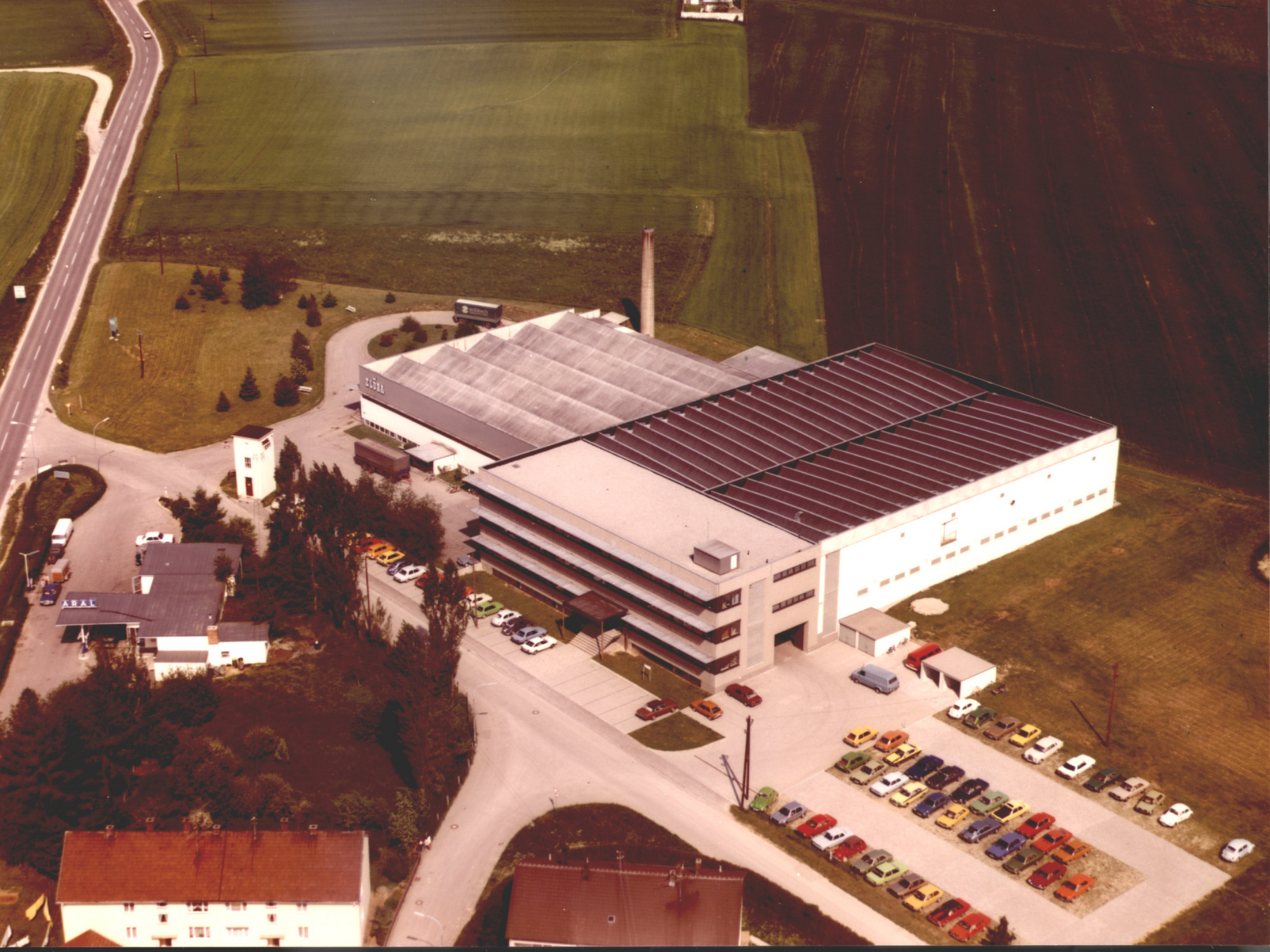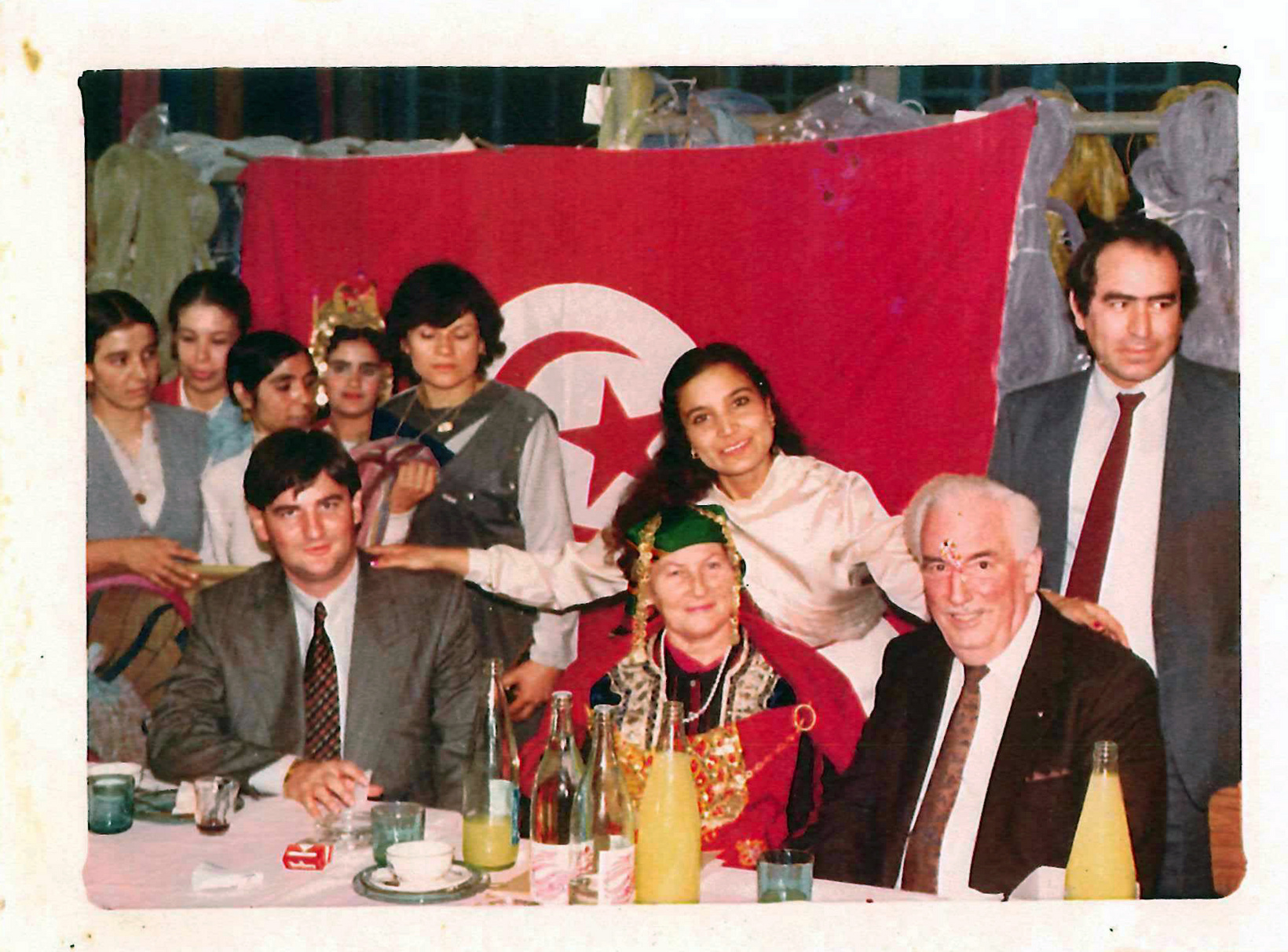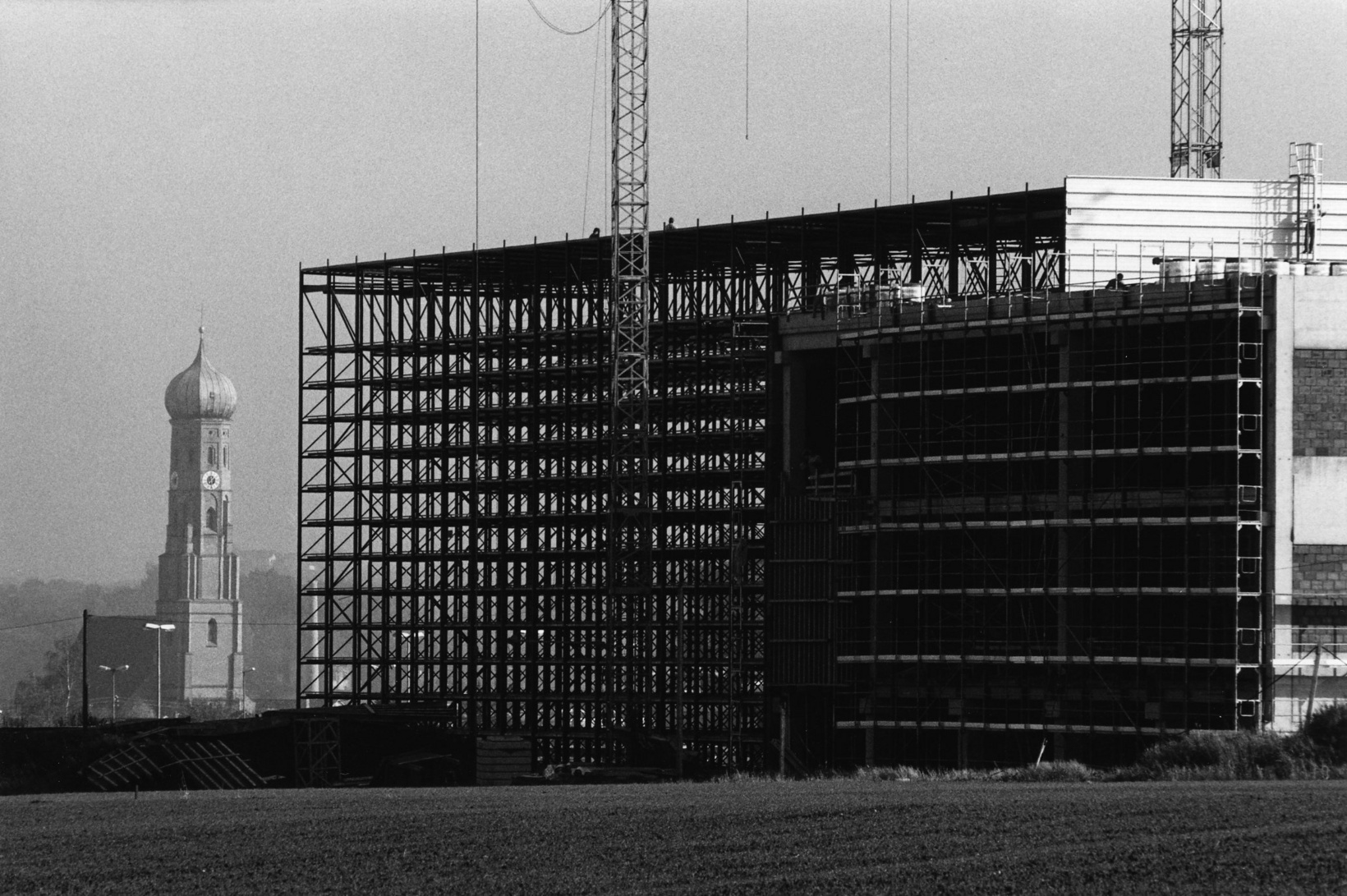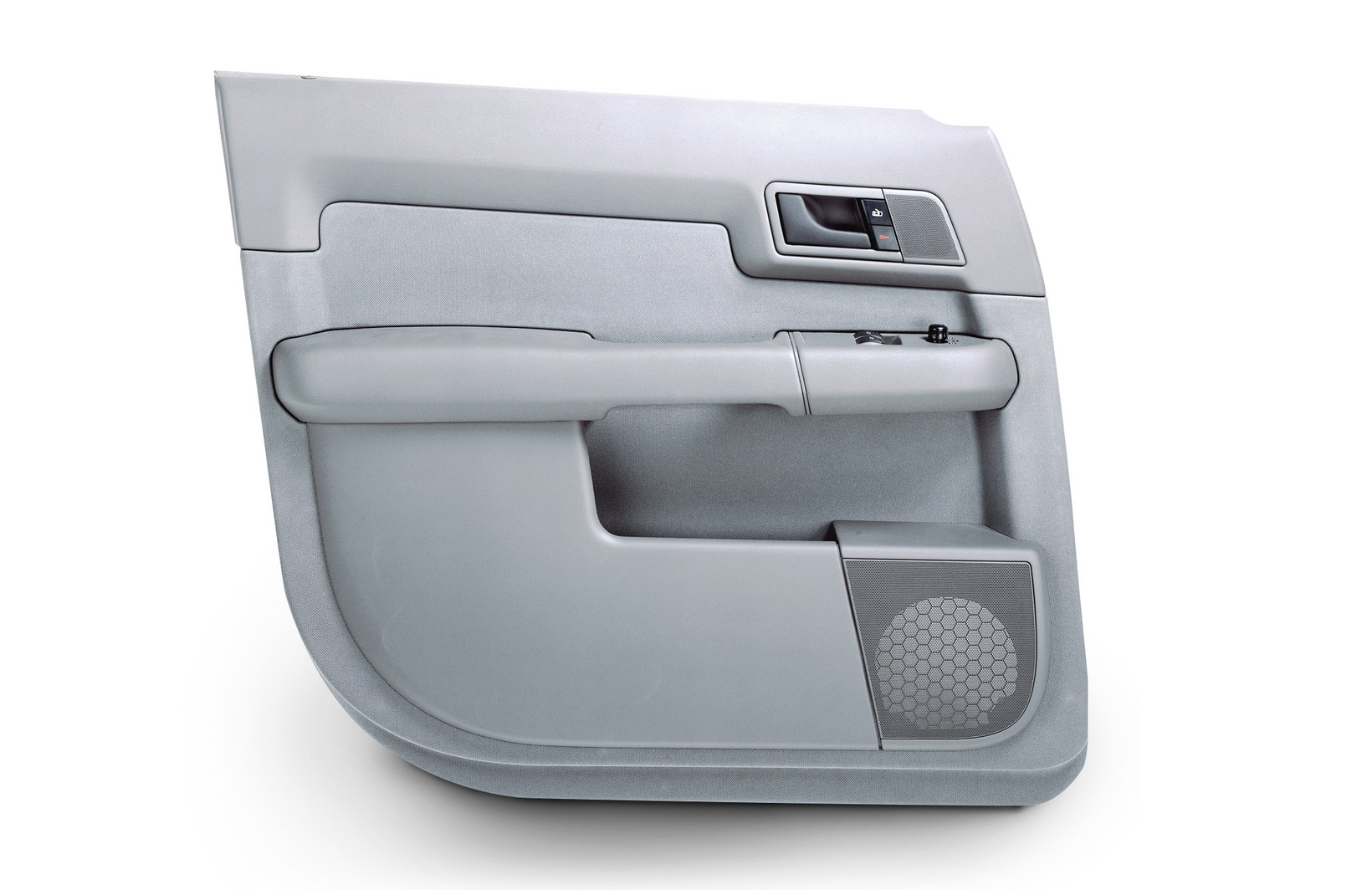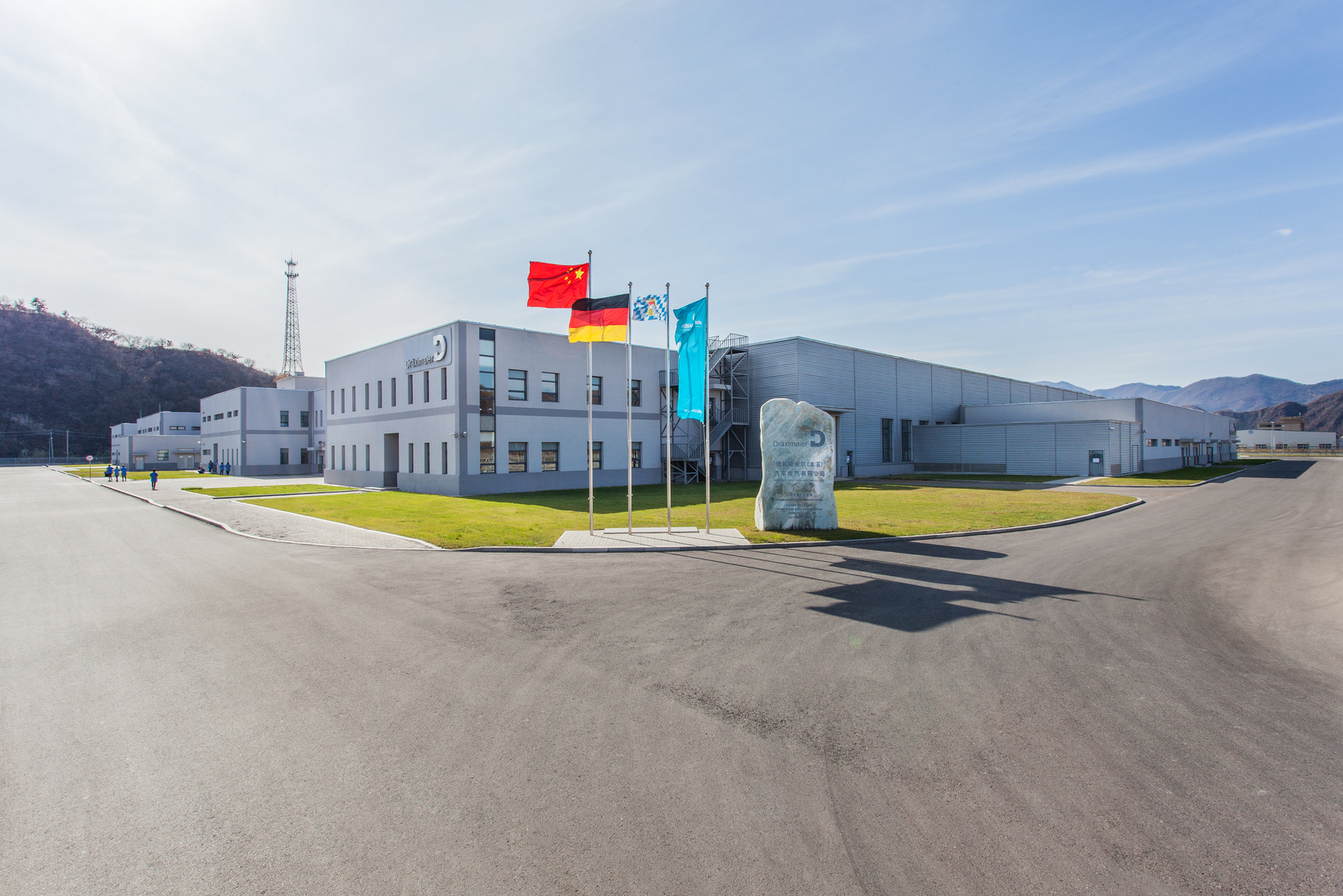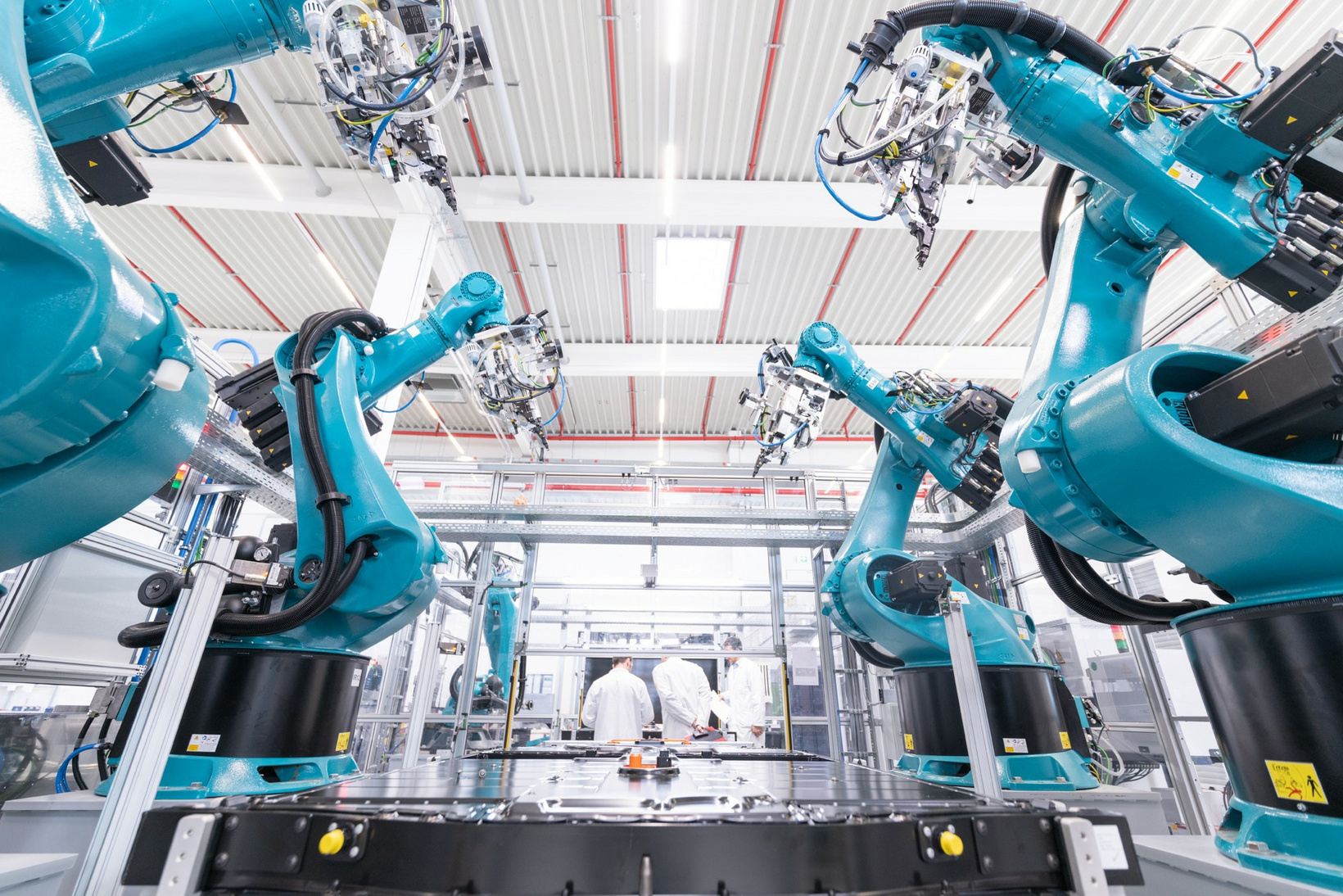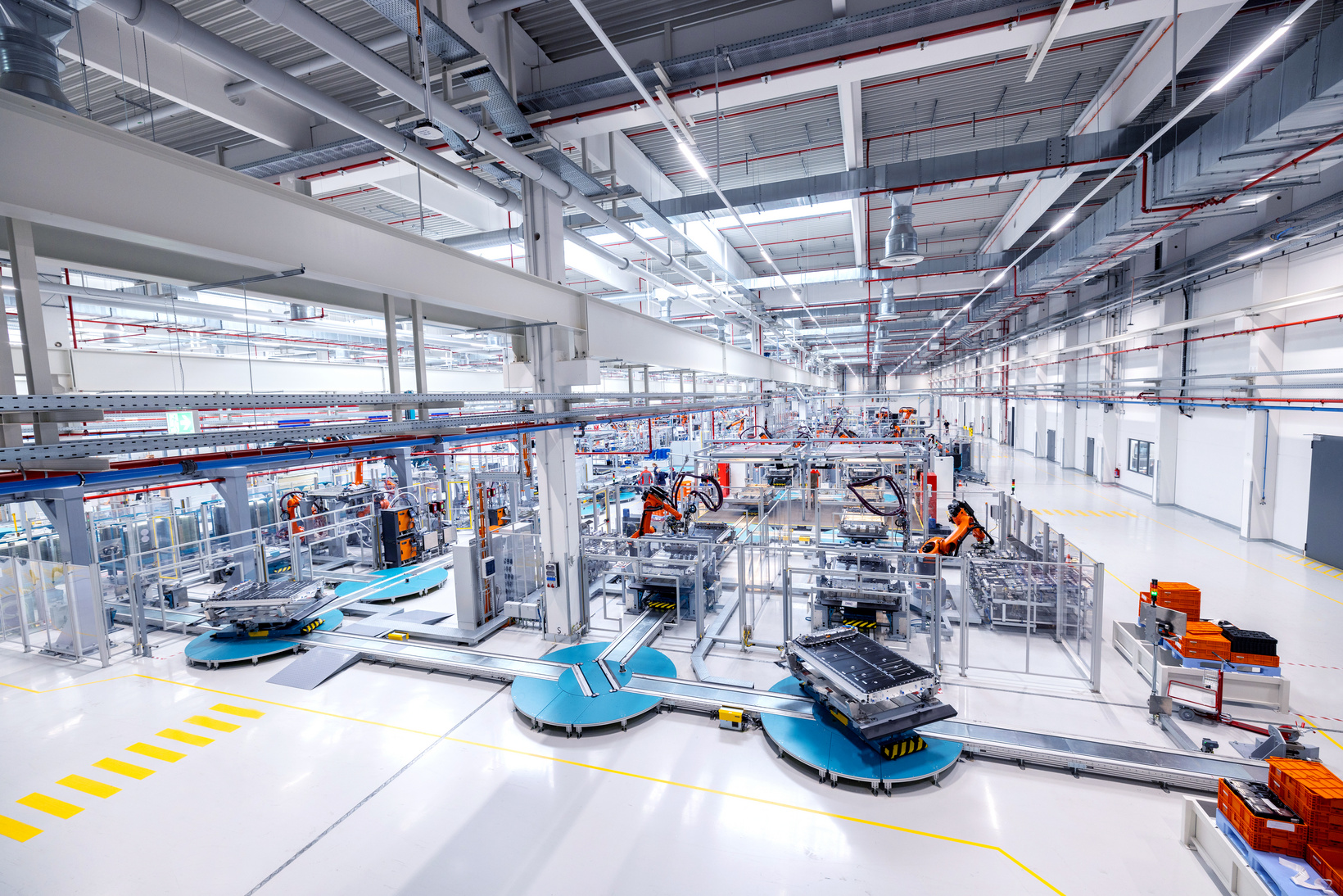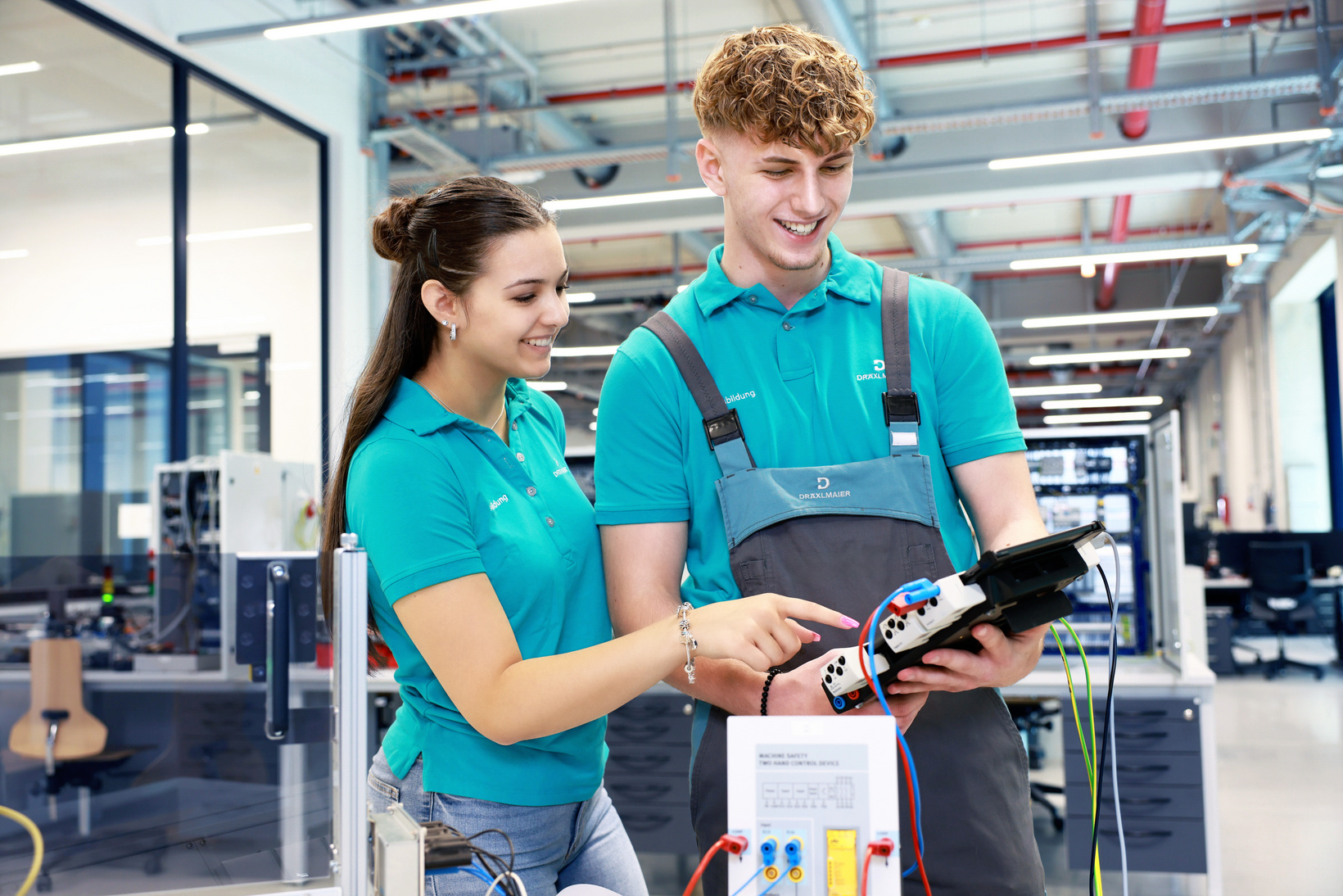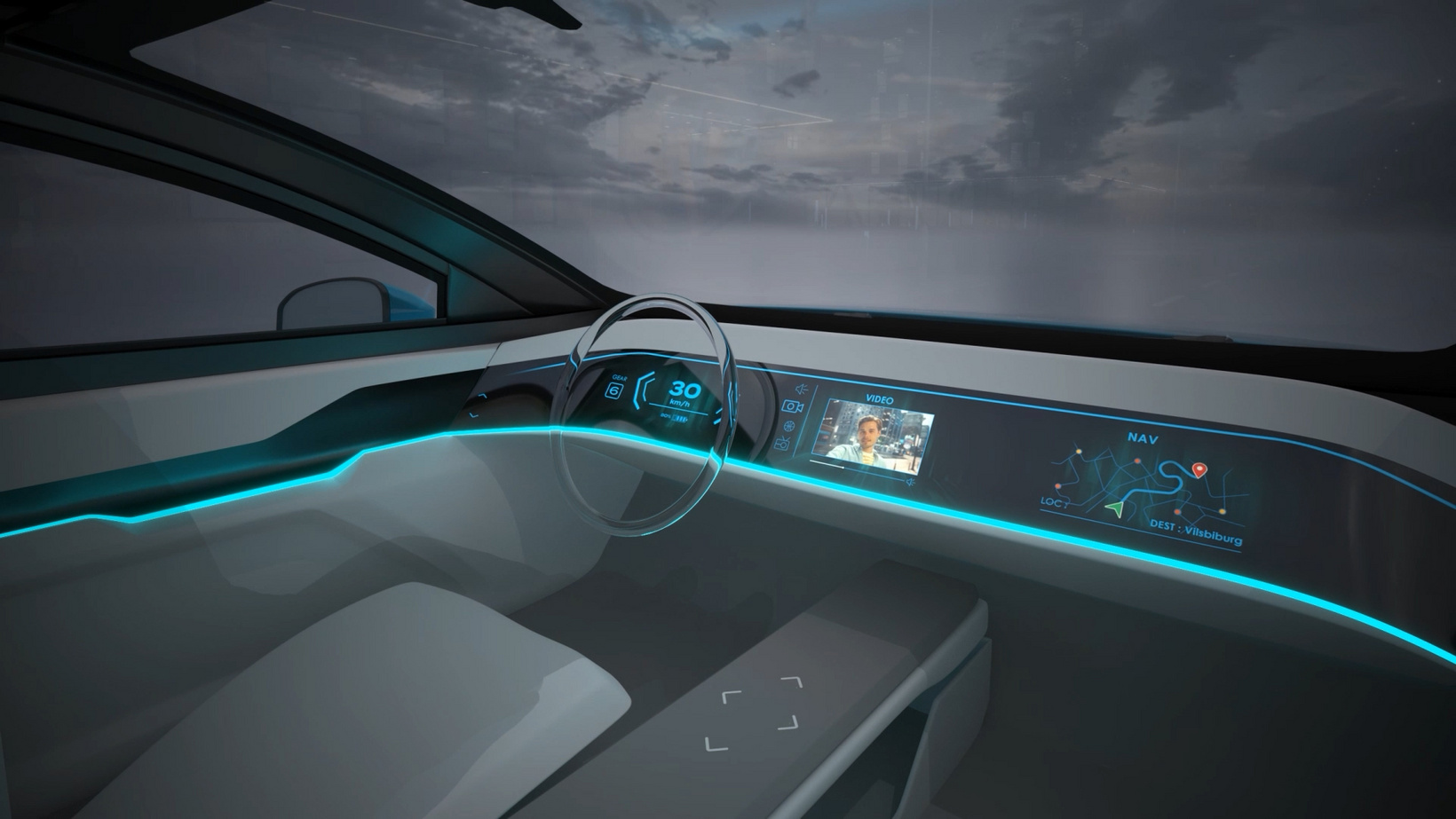Before 1958: the history of the Dräxlmaier family
Of shoes
and lederhosen
The DRÄXLMAIER Group did not have its origin in the automotive industry, but rather in leather production. In 1875, Michael Dräxlmaier, the grandfather of Fritz Dräxlmaier Sr., founded a leather and shoe factory in Geisenhausen. The company had one of the first 10 telephone lines in the Landshut region. This telephone connection made it possible to take orders quickly. Soon, the Dräxlmaiers not only purchased large equipment, but were also producing energy themselves – with their own steam power plant. They were already a trailblazer at this time. The company quickly gained an outstanding reputation and expanded its range of lederhosen and ski helmets.
1958 to 1960: How it all started
From Goggos
to dinner forks
In 1958, Lisa and Fritz Dräxlmaier Sr. founded a new company. The first order for the young company: production of 50,000 cable sets for the Goggomobil. Founding the firm was a risk because of short lead times and uncertain interest in a car that would later become a cult item. However, the hard work and ingenuity of the founders quickly brought the company onto a successful path. With the help of female home-based workers and dinner forks, the first wire harnesses were soon produced and delivered to the Hans Glas GmbH . Shortly thereafter, it received the first interior order: DRÄXLMAIER also supplied the door panel for the Goggo.
1960 to 1969: New products
From cables
to interior
Be it leather-wrapped instrument panels or door panels, within a very short time, DRÄXLMAIER not only found its way into the interior segment of the automotive industry but also greatly increased its product range. The company invested in new equipment for the production of door panels and dashboards. In 1964, the new company building was constructed at the Brückenstrasse in Vilsbiburg. DRÄXLMAIER gained a new customer only a few years later: the automobile manufacturer BMW. With this, the company entered the premium automotive segment.
1970 through 1979: foreign expansion
From Vilsbiburg
to the world
The company grew – both in Vilsbiburg and in foreign countries. In order to fill existing orders, a new production and administration building was constructed at the location of the headquarters. The first DRÄXLMAIER plant outside Germany was opened in 1974 in Sousse, Tunisia. Audi and Volkswagen had joined BMW on the list of the automotive supplier's customers. In 1976, DRÄXLMAIER expanded to Canada and opened its first North American plant near the banks of the Niagara River. Two years later, the site in Braunau, Austria opened. One company had become six.
1980 though 1989: More growth
From 10
to 2,000
DRÄXLMAIER continued to grow. From the original 10 employees, there were about 2,000 during the 1980s. The first issue of the employee magazine, D-REPORT, was published and the company suggestion process was introduced. At the end of the 80s, an automatic high-bay and small parts warehouse was set up in Vilsbiburg, so that in the future, products could be delivered just-in-time and just-in-sequence to the automobile manufacturers.
1990 to 1999: Innovations bring progress
From idea
to innovation
As vehicle complexity increased, so did the number of branches in the wiring harnesses. More and more parts had to be supplied with power and precision. The wiring harnesses looked completely different, depending on the equipment selected by the end-customer. To solve this, DRÄXLMAIER invented the customer-specific wiring harness in 1990. Just a few years later, the company also became a system supplier for the complete interior. This was followed by products such as the functionally-integrated door module or a vehicle interior trim made with natural fibers. In 1998, the DRÄXLMAIER Technology Center was opened.
2000 to 2009: Into the new millennium
Natural fibers
and new plants
DRÄXLMAIER continued to expand. Two production sites in China, four in Mexico, as well as one in Nicaragua and one in the Republic of Moldova were added over the next few years. In 2000, DRÄXLMAIER produced what was then the lightest door in the world for the Audi A2 – eight years later, the company developed an even lighter door panel, which was sustainably produced as well from a biocomposite material. The door made from natural fibers went into series production at BMW. With the growing interest in alternative powertrains, DRÄXLMAIER invested in the battery business, and in 2009, received the first order for various high-voltage wiring harness systems from Mercedes-Benz.
2010 to 2019: four product segments
Exploring
new horizons
In 2011, natural fiber was visible for the first time in the BMW i3. DRÄXLMAIER continued to grow and opened new plants in Macedonia, Germany, Mexico, the USA and China. In 2014, the company was recognized for the fastest growth among the TOP 100 automotive suppliers. The next few years saw some anniversaries: The dual vocational training system celebrated its 40-year anniversary, and BMW had been a DRÄXLMAIER customer for 50 years. In 2018, the company celebrated its 60-year anniversary. DRÄXLMAIER entered the realm of series battery production with the opening of the site in Sachsenheim.
2020 to today
Shaping -
now
DRÄXLMAIER continues to invest in electromobility. Another state-of-the-art, automated production plant for high-voltage battery systems is opened in Leipzig, Germany. The executive board is strenghthened. On May 8, 2023, the DRÄXLMAIER Group celebrates its 65th anniversary. The Test and Validation, Special Machine Construction and DRÄXLMAIER apprenticeship departments find their new home in the new building 45 at the headquarters. In September 2024, new apprentices start their careers at DRÄXLMAIER for the 50th time.
